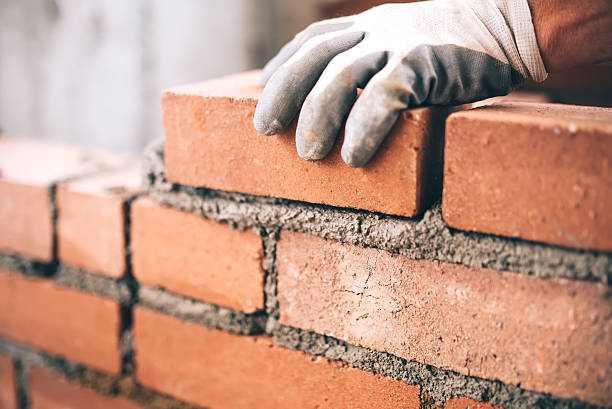Chimney Flashing and Cap Repair: Safeguard Your Home from Elements
Chimney Flashing and Cap Repair: Safeguard Your Home from Elements
Blog Article
Unlocking the Keys of Lasting Stonework Building Practices for Eco-Friendly Buildings
In the realm of contemporary building and construction, the search of lasting practices has actually come to be paramount. Amongst the myriad methods to environmentally friendly structure, sustainable masonry building stands apart as a time-tested and resilient approach that holds a riches of untapped possibility. From the choice of materials to innovative building methods, the tricks to attaining sustainability within stonework building and construction are complex and interesting. By discovering the advantages, products, techniques, and future patterns of sustainable masonry, a deeper understanding of exactly how these methods can form the future of green structures arises.
Benefits of Sustainable Stonework Construction
Welcoming lasting masonry building techniques not just lowers environmental impact but also supplies long-term financial benefits to home builders and communities. By making use of products like recycled bricks, obstructs, and rocks, contractors can considerably lower the carbon footprint of their tasks while promoting resource effectiveness. In addition, sustainable stonework building techniques, such as correct insulation and thermal mass properties, can enhance energy effectiveness within buildings, leading to decreased functional expenses gradually.
Moreover, the longevity and resilience of masonry frameworks add to long-lasting economic advantages. Structures built making use of lasting stonework practices typically require much less maintenance and repair service, converting to cost financial savings for builders and building owners. The long life of stonework materials additionally guarantees that structures remain stable and secure, minimizing the requirement for frequent restorations or replacements.
Eco-Friendly Stonework Products
Utilizing green stonework materials is an essential step towards enhancing the sustainability of construction methods and minimizing ecological effect while maximizing long-lasting financial advantages. Sustainable stonework materials are sourced, generated, and utilized in a way that decreases overall environmental effect. Materials such as recycled blocks, redeemed stone, and lasting concrete blocks are becoming progressively popular options for eco-conscious contractors. Recycled bricks, as an example, not only divert waste from landfills yet likewise require less power to create contrasted to new blocks. Reclaimed rock offers an one-of-a-kind aesthetic allure while reducing the demand for new quarrying. Sustainable concrete obstructs integrate recycled aggregates and may include better insulation residential or commercial properties, adding to energy effectiveness in structures.
In addition, all-natural products like adobe, rammed earth, and straw bundles give outstanding thermal mass properties, reducing the requirement for home heating and cooling down energy. These materials are often locally offered, advertising regional economic situations and reducing transportation-related carbon emissions. By selecting environment-friendly stonework products, building and construction tasks can dramatically lower their ecological impact and add to the development of healthier, a lot more sustainable developed environments.
Energy-Efficient Masonry Techniques
Power efficiency plays a critical duty in boosting the sustainability of masonry construction practices. By applying energy-efficient stonework strategies, builders can significantly reduce the general energy intake of a structure, leading to lower functional expenses and a smaller ecological impact. One key energy-efficient masonry method is using thermal mass, which involves integrating thick materials like concrete or brick right into the structure's structure to soak up and keep warmth. This aids manage indoor temperatures, lowering the demand for mechanical heating and cooling systems.

Innovations in Sustainable Masonry
Recent innovations in sustainable masonry methods have produced innovative techniques that are reshaping the construction market. One such innovation is the growth of self-healing concrete, which makes use of bacteria embedded within the concrete to recover splits autonomously. This breakthrough not just lowers maintenance costs but additionally improves the toughness of masonry frameworks, adding to their sustainability.
One more notable advancement is the use of recycled accumulations in masonry building and construction - masonry contractor. By incorporating materials such as crushed ceramic waste or recycled glass into concrete blends, building contractors can minimize the environmental impact of construction projects while preserving architectural integrity. This method not just diverts waste from garbage dumps however additionally preserves natural resources, making it a vital innovation in sustainable masonry building
Furthermore, the integration of electronic design tools, such as Structure Information Modeling (BIM), is transforming the way masonry frameworks are intended and built. BIM permits for more precise estimations, minimized material wastage, and enhanced energy efficiency, eventually resulting in even more sustainable structure techniques. These technologies collectively signify a promising future for sustainable masonry building in the period of environment-friendly buildings.
Future Trends in Stonework Sustainability
With the cutting-edge strides made in sustainable masonry methods, the future patterns in stonework sustainability are poised to additional change the construction industry. Among the vital patterns forming the future of stonework sustainability is the increased assimilation of technology. Innovations such as Structure Information Modeling (BIM) and virtual fact simulations are being made use of to enhance masonry building and construction procedures, resulting in minimized material waste and enhanced power effectiveness in structures.
Moreover, the advancement of unique sustainable products is set to play a substantial role in boosting the browse around here eco-friendliness of stonework construction. masonry visit their website contractor. Innovations like self-healing concrete, recycled aggregates, and bio-based binders are acquiring traction for their ability to lessen environmental effect while keeping structural honesty

Conclusion
Finally, sustainable stonework construction techniques provide countless advantages for environmentally friendly structures. By utilizing green products and energy-efficient strategies, masonry can add to a much more lasting built atmosphere. Developments in lasting masonry are constantly being created to additionally enhance the ecological performance of buildings. Looking towards the future, the fad of masonry sustainability is expected to expand, bring about more eco-friendly and energy-efficient building techniques in the years to come.
Report this page